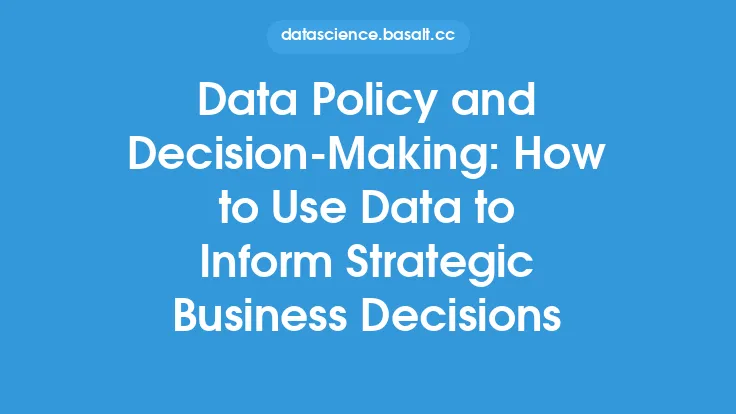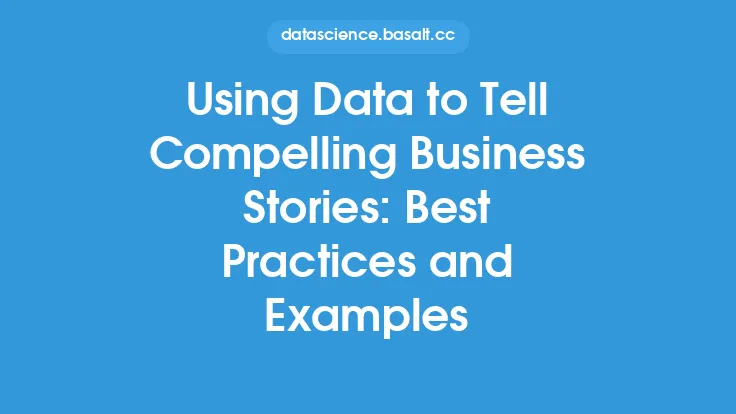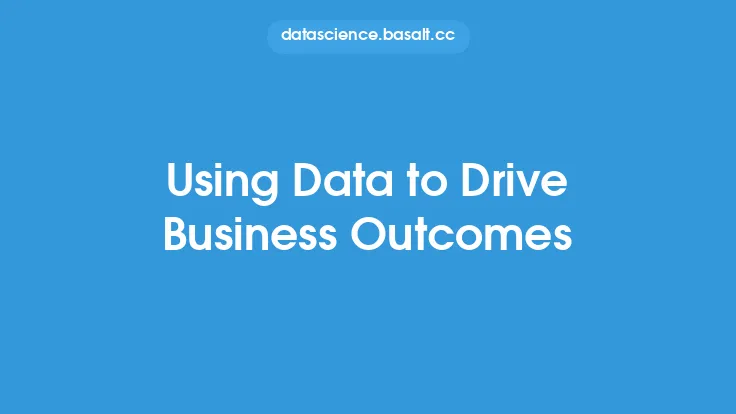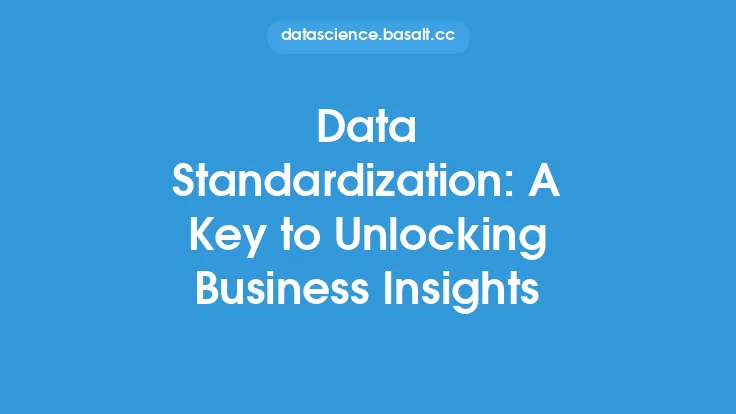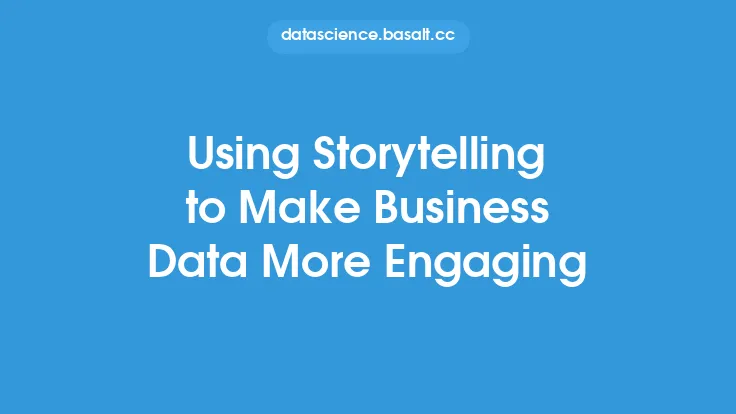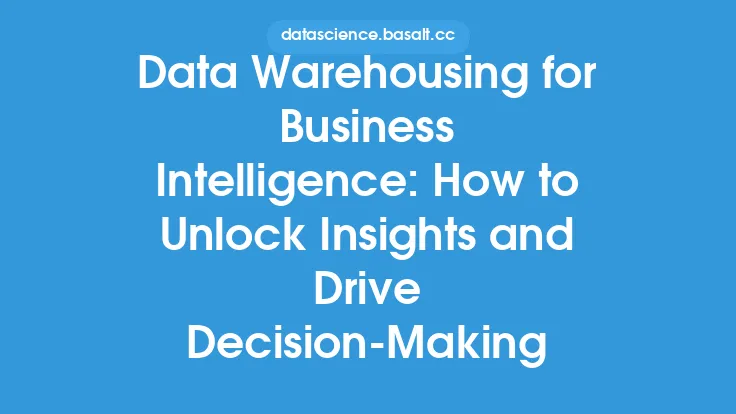In today's data-driven business landscape, organizations are constantly seeking ways to gain a competitive edge and make informed decisions. One crucial step in achieving this goal is through data exploration, a process that involves examining and analyzing data to uncover patterns, trends, and insights that can inform business strategy. Data exploration is a critical component of data analysis, as it enables businesses to extract valuable information from their data, identify areas for improvement, and develop targeted strategies to drive growth and success.
Introduction to Data Exploration
Data exploration is an iterative process that involves a series of steps, including data collection, data cleaning, data transformation, and data analysis. The primary objective of data exploration is to gain a deeper understanding of the data, identify relationships between variables, and uncover hidden patterns and trends. This process is essential in helping businesses to develop a data-driven culture, where decisions are based on facts and evidence rather than intuition or guesswork. By leveraging data exploration, organizations can identify new business opportunities, optimize operations, and improve customer engagement.
The Role of Data Exploration in Business Strategy
Data exploration plays a vital role in informing business strategy, as it provides organizations with the insights and information needed to make informed decisions. By analyzing data, businesses can identify areas of strength and weakness, opportunities and threats, and develop targeted strategies to address these factors. For example, a company may use data exploration to analyze customer behavior, identify trends and patterns in purchasing habits, and develop targeted marketing campaigns to drive sales and revenue. Similarly, data exploration can be used to analyze operational data, identify areas of inefficiency, and develop strategies to improve productivity and reduce costs.
Data Exploration Techniques
There are several data exploration techniques that organizations can use to analyze their data and uncover insights. These techniques include data summarization, data visualization, and statistical analysis. Data summarization involves using statistical measures such as mean, median, and mode to summarize large datasets and identify patterns and trends. Data visualization involves using charts, graphs, and other visualizations to communicate complex data insights and patterns. Statistical analysis involves using techniques such as regression analysis and hypothesis testing to identify relationships between variables and make predictions about future outcomes.
The Importance of Data Quality in Exploration
Data quality is a critical factor in data exploration, as poor-quality data can lead to inaccurate insights and flawed decision-making. Organizations must ensure that their data is accurate, complete, and consistent, and that it is properly formatted and documented. This involves implementing data quality control processes, such as data validation and data cleansing, to ensure that data is reliable and trustworthy. Additionally, organizations must ensure that their data is properly stored and managed, using techniques such as data warehousing and data governance to ensure that data is secure, accessible, and usable.
Best Practices for Data Exploration
There are several best practices that organizations can follow to ensure effective data exploration. These include starting with a clear question or hypothesis, using a variety of data sources and techniques, and iterating and refining the analysis as needed. Organizations should also ensure that their data exploration is aligned with business objectives and goals, and that insights and recommendations are communicated effectively to stakeholders. Additionally, organizations should prioritize data quality and ensure that their data is properly documented and stored, using techniques such as data cataloging and data lineage to ensure that data is transparent and trustworthy.
Tools and Technologies for Data Exploration
There are several tools and technologies that organizations can use to support data exploration, including data analytics software, data visualization tools, and big data platforms. Data analytics software such as Excel, SQL, and Python can be used to analyze and manipulate data, while data visualization tools such as Tableau and Power BI can be used to communicate complex data insights and patterns. Big data platforms such as Hadoop and Spark can be used to store and process large datasets, while cloud-based platforms such as AWS and Azure can be used to support scalable and flexible data analysis.
Real-World Applications of Data Exploration
Data exploration has a wide range of real-world applications, from business and finance to healthcare and education. For example, a retail company may use data exploration to analyze customer behavior and develop targeted marketing campaigns, while a healthcare organization may use data exploration to analyze patient outcomes and develop personalized treatment plans. Similarly, a financial institution may use data exploration to analyze market trends and develop investment strategies, while a educational institution may use data exploration to analyze student performance and develop targeted interventions.
Challenges and Limitations of Data Exploration
Despite the many benefits of data exploration, there are several challenges and limitations that organizations must be aware of. These include the need for specialized skills and expertise, the risk of data overload and complexity, and the potential for bias and error in data analysis. Organizations must also ensure that their data exploration is aligned with business objectives and goals, and that insights and recommendations are communicated effectively to stakeholders. Additionally, organizations must prioritize data quality and ensure that their data is properly documented and stored, using techniques such as data cataloging and data lineage to ensure that data is transparent and trustworthy.
Future Directions for Data Exploration
The field of data exploration is constantly evolving, with new tools, technologies, and techniques emerging all the time. Some of the future directions for data exploration include the use of artificial intelligence and machine learning to automate data analysis, the development of new data visualization tools and techniques, and the increasing use of cloud-based platforms and big data technologies to support scalable and flexible data analysis. Additionally, there is a growing recognition of the importance of data ethics and governance, and the need for organizations to prioritize data quality, transparency, and accountability in their data exploration efforts.
